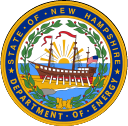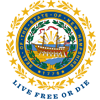Weatherization Assistance Program
The State of New Hampshire's Weatherization Assistance Program (WAP) is designed to reduce household energy use and costs in the homes of low-income persons throughout the state by installing energy efficiency improvements.
The New Hampshire Department of Energy operates the Weatherization Program with grants from the US Department of Energy and the US Department of Health and Human Services. NH Department of Energy subcontracts with New Hampshire's Community Action Agencies, which are responsible for operating and delivering weatherization services at the local level.
The overall goal of the Weatherization Program is to serve those low-income households that are most vulnerable to high-energy costs and who do not have the means of making cost-effective energy conservation improvements to their homes. (See the eligibility guidelines.)
NH Department of Energy, whenever possible, collaborates with the electric and natural gas utilities' energy efficiency programs to enhance the weatherization services provided to low-income households in New Hampshire. See Energy Efficiency Rebates and Incentives for more information about the utility-sponsored programs - note that these programs are available to everyone, so they are a resource even if you are not eligible for the WAP.
How to Apply
To apply for Weatherization Assistance, contact your local Community Action Agency to set up an appointment or learn more about the application process. Once an applicant is determined income eligible, the application is placed on the waiting list. An energy auditor will contact the applicant to schedule a time to perform a comprehensive home energy audit.
- The audit includes diagnostic testing, which is performed by a Department of Energy or Building Performance Institute certified energy auditor and will help determine if the building qualifies for weatherization.
If the building is determined as qualified, the energy auditor will then develop an energy audit report that will identify all cost effective energy saving improvements. From this list, qualified improvements will be installed based on order of highest savings.
- Typical high priority measures include: attic air sealing, installing attic insulation, installing wall insulation (where none exists) and air sealing and/or insulation of basements and crawl spaces.
Field Standards and Procedures
The New Hampshire Weatherization Program Policies and Procedures Manual - 2020 Edition is now available.
Please note: Since this Manual was last updated, income eligibility for the program has changed from 200% of Federal Poverty Guideline (FPG) to 60% of State Median Income (SMI). All references to 200% of FPG for eligibility [including, but not limited to Sections 1.7.1; 1.8; 2.2; 2.3; 4; 6.1.2; and the definition of ‘Income Eligibility’ on page 104] in this Manual should be understood to read as 60% of State Median Income.
For more information about how the Weatherization Assistance Program is implemented in New Hampshire homes, please see the New Hampshire Weatherization Field Guide 2021.
The Standard Work Specifications for Home Energy Upgrades establish the minimum performance standards to be met by all Weatherization Assistance Program participants across the country.
Other Resources
The Electric Assistance Program (EAP) provides income eligible customers with a discount on their monthly electric bills. The Fuel Assistance Program (FAP) may be able to help eligible households pay for heat during the winter season and implement long-term solutions to heating costs.
For more information on what weatherization is and how it reduces energy costs, see this page of Frequently Asked Questions as well as these links to outside resources.
Heat Saving Energy Tips
- Make sure your heating system receives professional maintenance each year.
- Clean any warm-air registers, baseboard heaters, and radiators as needed; make sure they’re not blocked by furniture, carpeting or drapes.
- Clean or replace filters on furnaces once a month or as needed.
- Run your kitchen, bath, and other ventilation fans for at least 20 minutes after you are done cooking or bathing.
- Install a programmable thermostat that adjusts the temperature according to your schedule.
- ENERGY STAR® labeled products can cut your energy bills up to 30%. Find retailers at www.energystar.gov when you’re ready to replace your heating or cooling systems — as well as appliances, lighting, windows, office equipment, and home electronics.
- Insulate your hot water heater and hot water pipes to prevent heat loss. Set your water heater temperature to 120°F.
- Insulate heating ducts in unheated areas such as attics and crawlspaces and keep them in good repair, to prevent heat loss of up to 60% at the registers.
- Place heat-resistant radiator reflectors between exterior walls and the radiators.
- Bleed trapped air from hot water radiators once or twice a season; if in doubt about how to perform this task, call a professional
Contact Us
Email: Weatherization@energy.nh.gov



